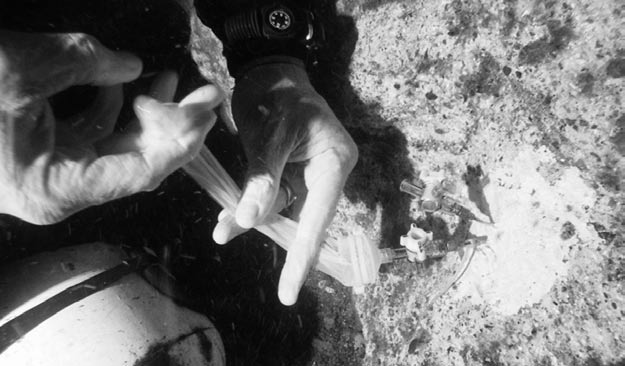An approach for collection of nearfield groundwater samples in submerged limestone caverns
DOI:
https://doi.org/10.3986/ac.v42i2-3.664Ključne besede:
sulfur oxidation, bacteria, acid dissolution, groundwater chemistryPovzetek
Walls of submerged caves feeding Florida springs are often lined with a heavy mat of filamentous bacteria, many of which are able to oxidize reduced sulfur in groundwater migrating from the porous bedrock into the cave conduit. To determine changes in water chemistry as water passes through the microbial mat, a simple device made from standard well screen and sealed with a rubber stopper and controllable vents was installed in a hole drilled in the wall of the cave passage. The sampler was sealed in place with marine epoxy. We measured anions in water from the sampler and from the water-filled conduit taken just outside the sampler. Most anions measured viz., Cl−, NO3−, and PO43−, increased slightly between the matrix and conduit waters. However, traces of sulfide were measured in the water from the rock matrix, but not in the conduit. SO42− concentrations in the conduit were about twice that measured in the water from the sampler, about 22 and 11 mg SO42− L−1, respectively, providing further evidence that sulfur oxidation is an important process in the bacterial mats attached to the limestone surfaces in these caves. An additional use of the sampling device is to measure discharge from the local bedrock into the cave conduit.
Keywords: sulfur oxidation, bacteria, acid dissolution, groundwater chemistry.
Prenosi

Prenosi
Objavljeno
Kako citirati
Številka
Rubrike
Licenca
Avtorji jamčijo, da je delo njihova avtorska stvaritev, da v njem niso kršene avtorske pravice tretjih oseb ali kake druge pravice. V primeru zahtevkov tretjih oseb se avtorji zavezujejo, da bodo varovali interese založnika ter da bodo povrnili morebitno škodo.
Podrobneje v rubriki: Prispevki




